"Chimpanzee mothers at Bossou, Guinea carry the mummified remains
of their dead infants"
Current Biology, 27th Apr. 2010
"Chimpanzee mothers at Bossou, Guinea carry the mummified remains
of their dead infants"
Dora Biro (University of Oxford), Tatyana Humle (University of Kent),
Kathelijne Koops (University of Cambridge), Claudia Sousa (Universidade
Nova de Lisboa), Misato Hayashi and Tetsuro Matsuzawa (Primate Research
Institute, Kyoto University)
The forests surrounding Bossou, Guinea, are home to a small,
semi-isolated chimpanzee community studied for over three decades. In
1992, Matsuzawa reported the death of a 2.5-year-old chimpanzee (Jokro)
at Bossou from a respiratory illness. The infant's mother (Jire) carried
the corpse, mummified in the weeks following death, for at least 27 days
(see the details in the videos below). In this report we recount two
further infant deaths at Bossou, observed over a decade after the
original episode but with striking similarities. During the 2003 dry
season, a respiratory epidemic broke out at Bossou, claiming the lives
of five chimpanzees (reducing their number from 19 to 14). Among the
dead were two infants: 1.2-year-old Jimato and 2.6-year-old Veve. The
mothers of both infants (Jire and Vuavua) continued to carry their
offspring's lifeless bodies for 68 and 19 days after death,
respectively. In all three cases, group members' responses to the
corpses were highly similar. With only one exception, we never observed
a response that could be interpreted as aversion, despite the bodies'
intense smell of decay and highly unusual appearance. In general, all
members of the community demonstrated high levels of tolerance towards
the corpses. The fact that all three documented cases of infant deaths
at Bossou were followed by extended carrying of the infants' remains
suggests that this behaviour may not be a rare occurrence in this small
community, and raises questions about the potential role of
observational learning in promoting chimpanzee mothers' prolonged
transport of deceased young. Nonetheless we hope that further data from
this already threatened community will not be quick in coming.
Jokro: The death of an infant chimpanzee
VIDEO type mp4 file1(94MB)
file2(32MB)
VIDEO type mpeg1 file1(140MB)
file2(40MB)
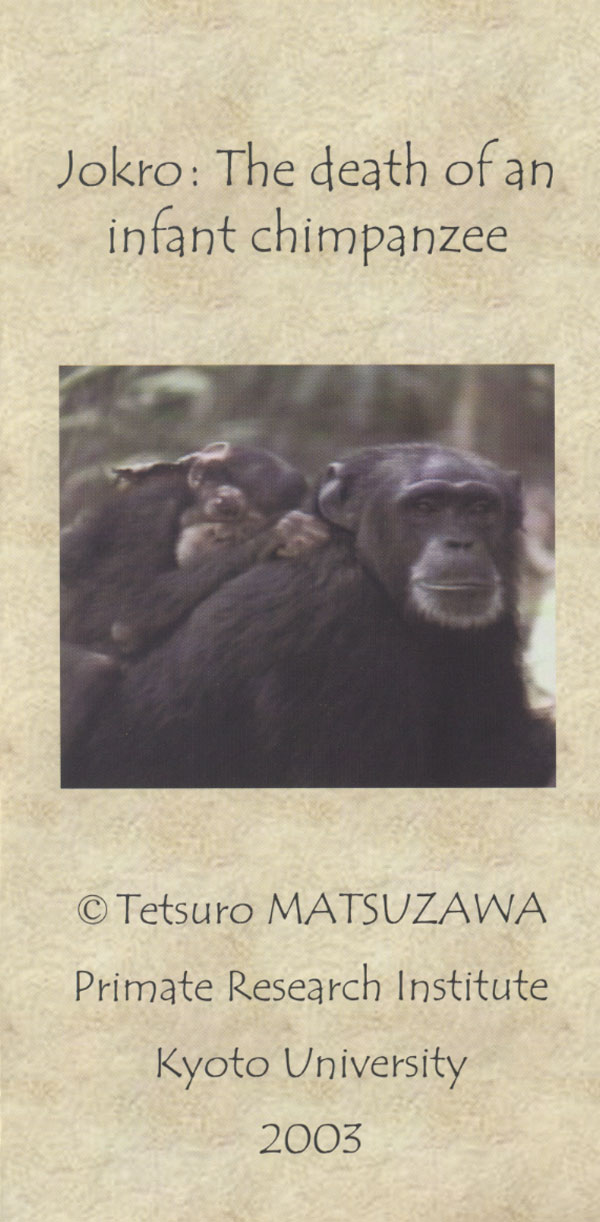
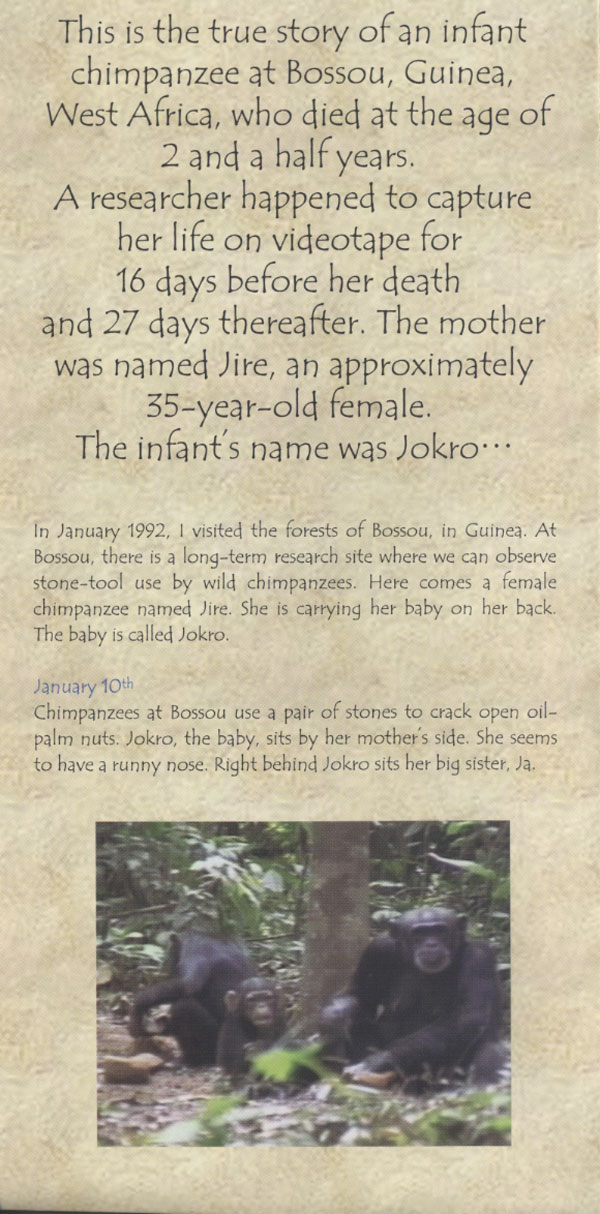
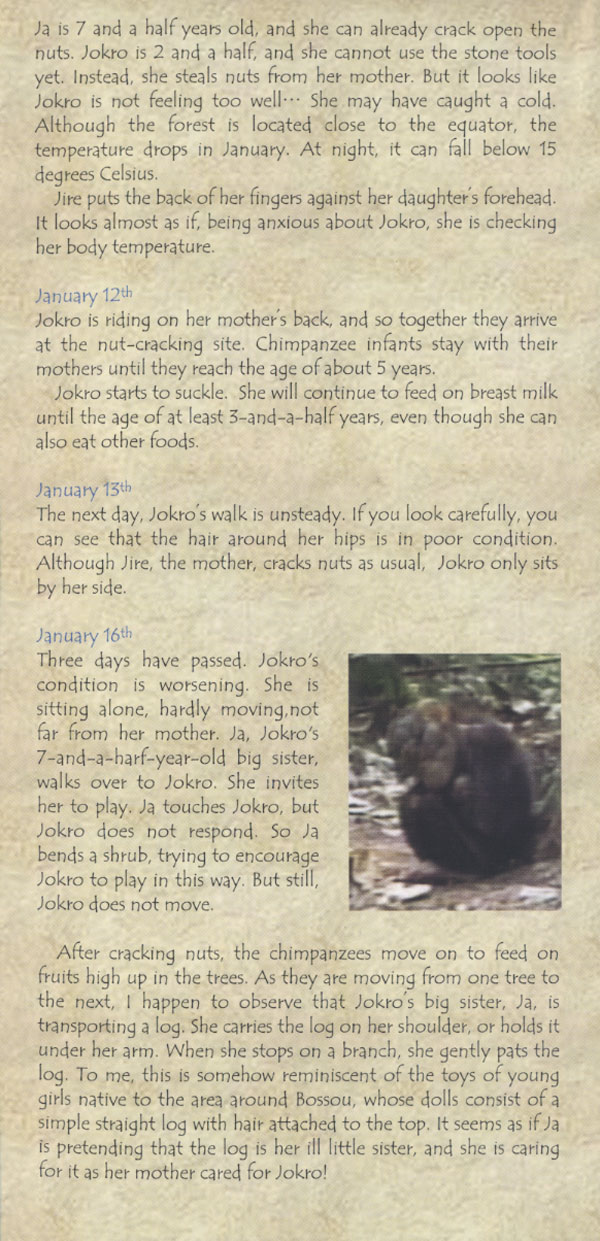
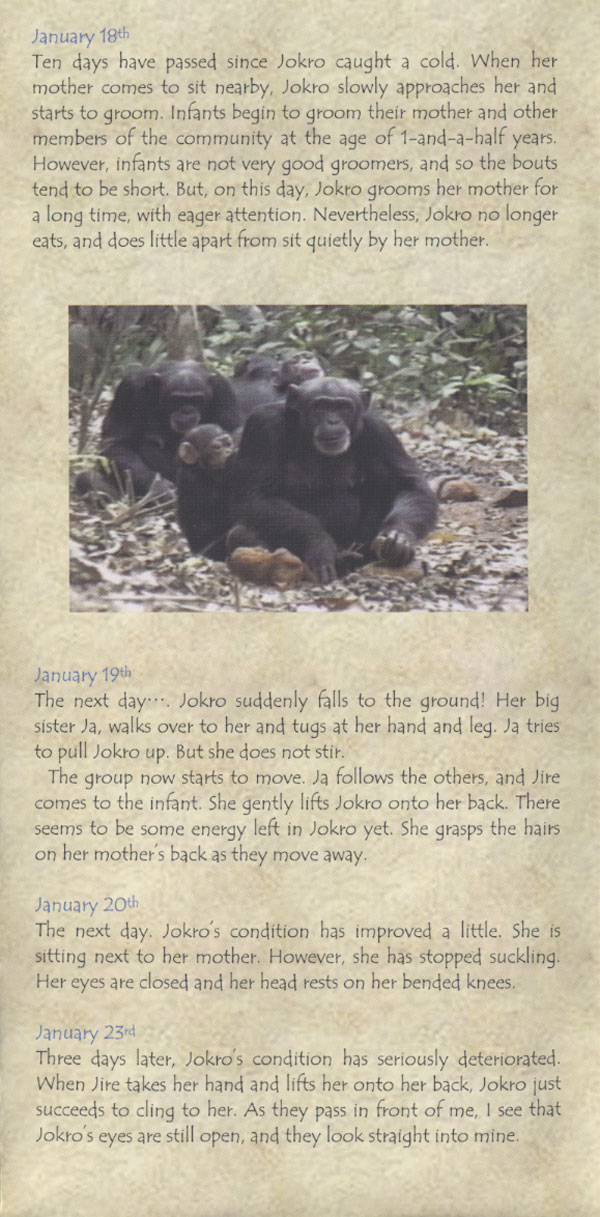
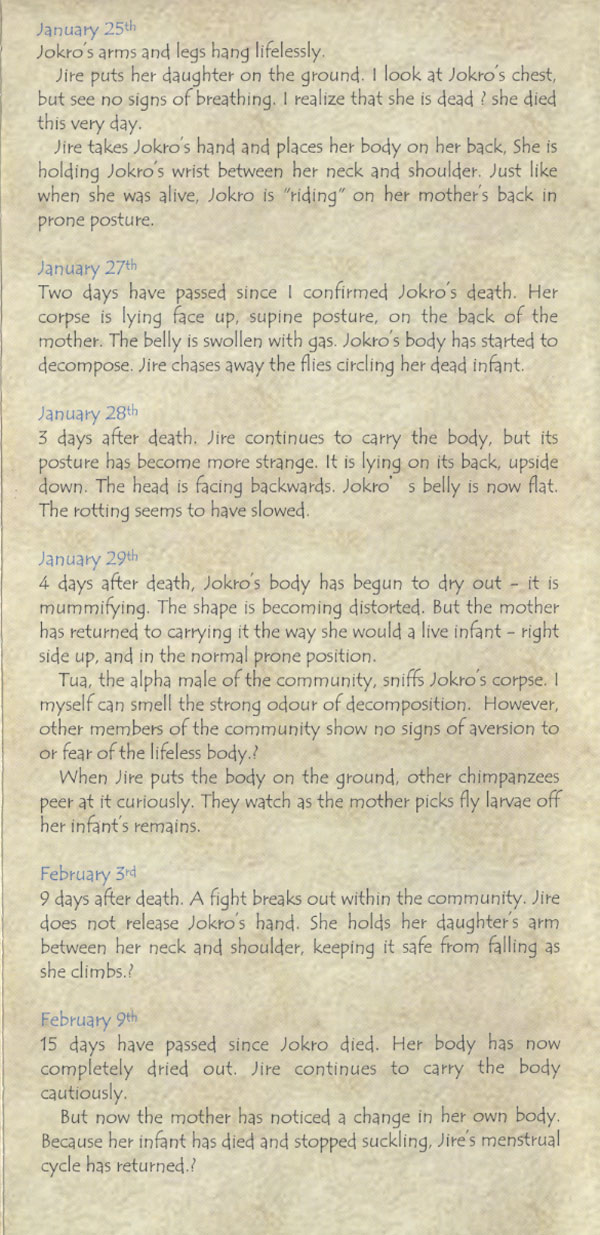
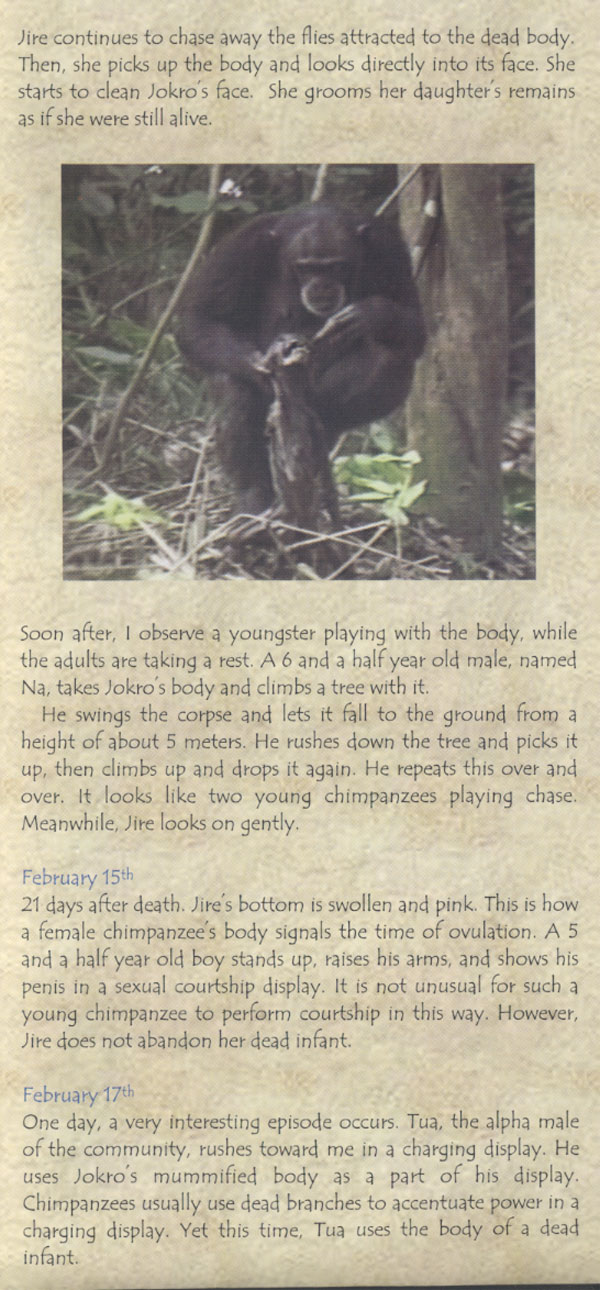
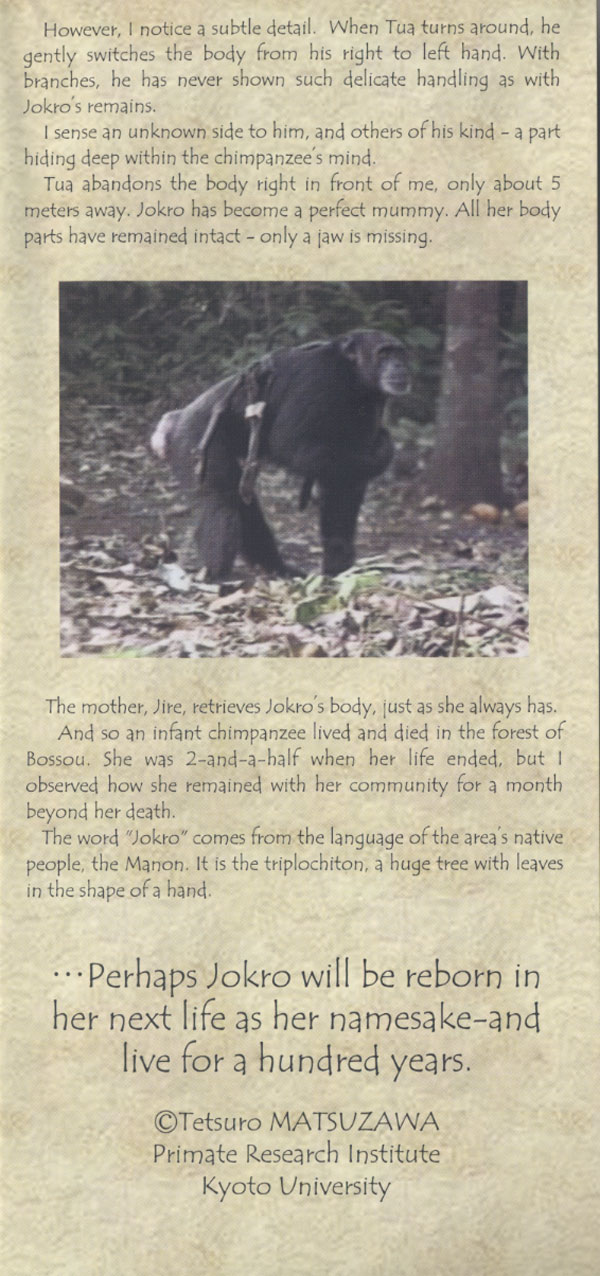
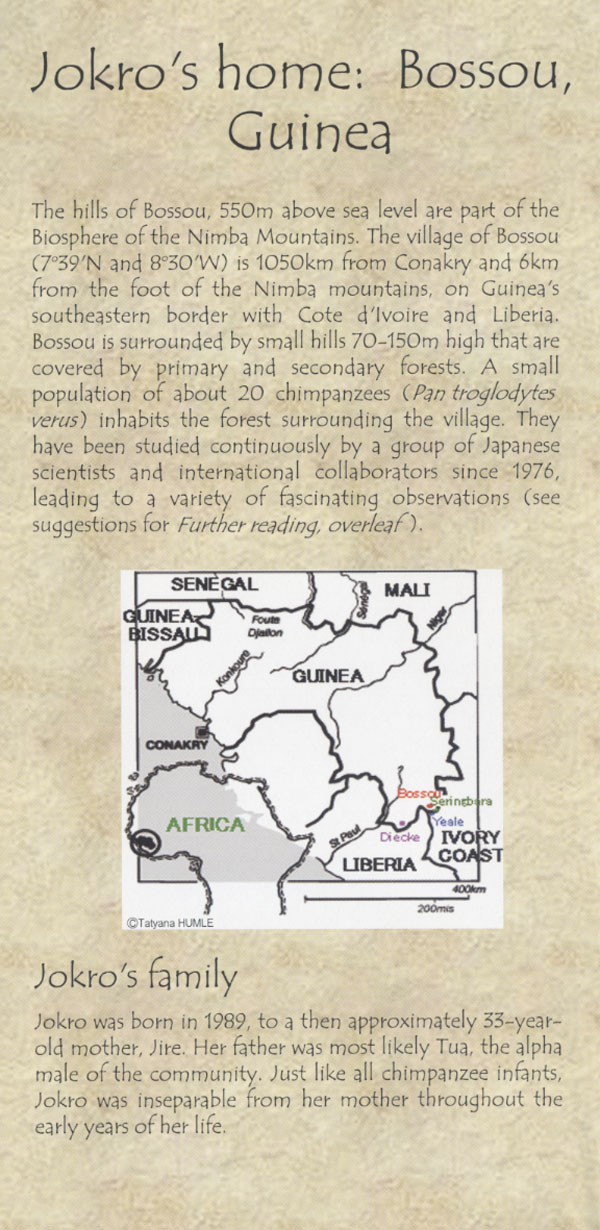
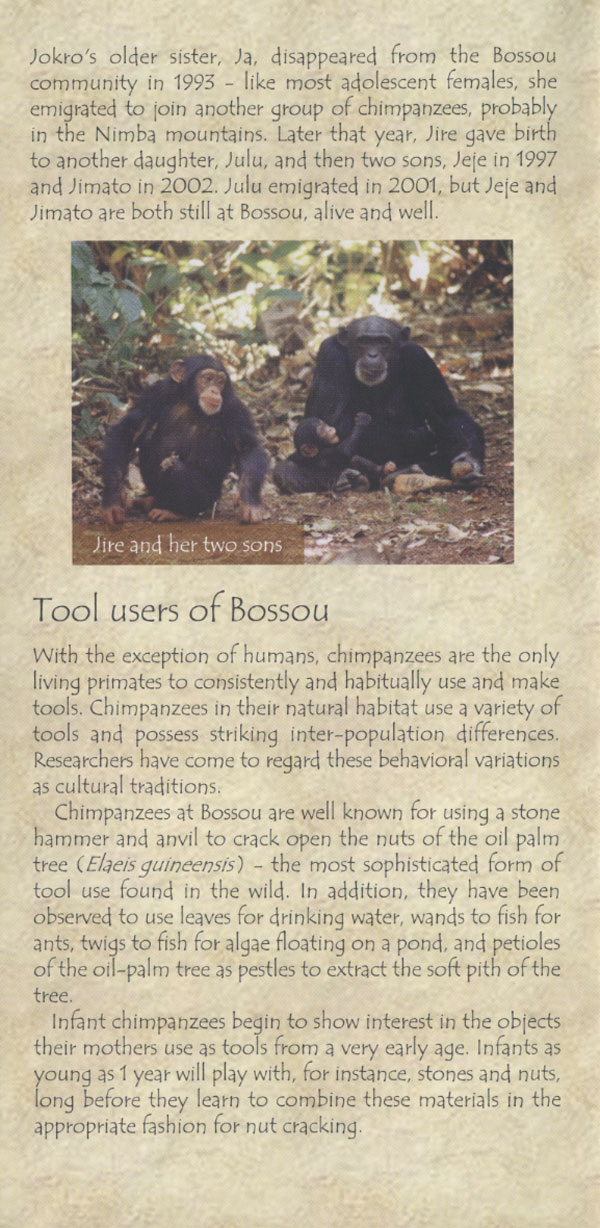
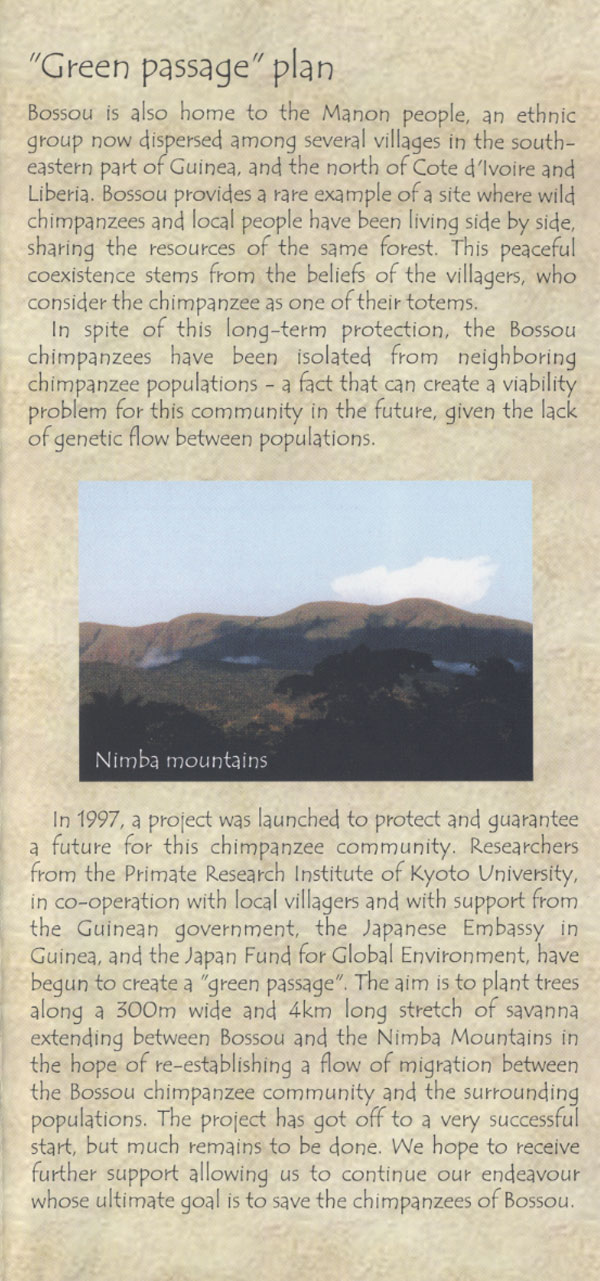
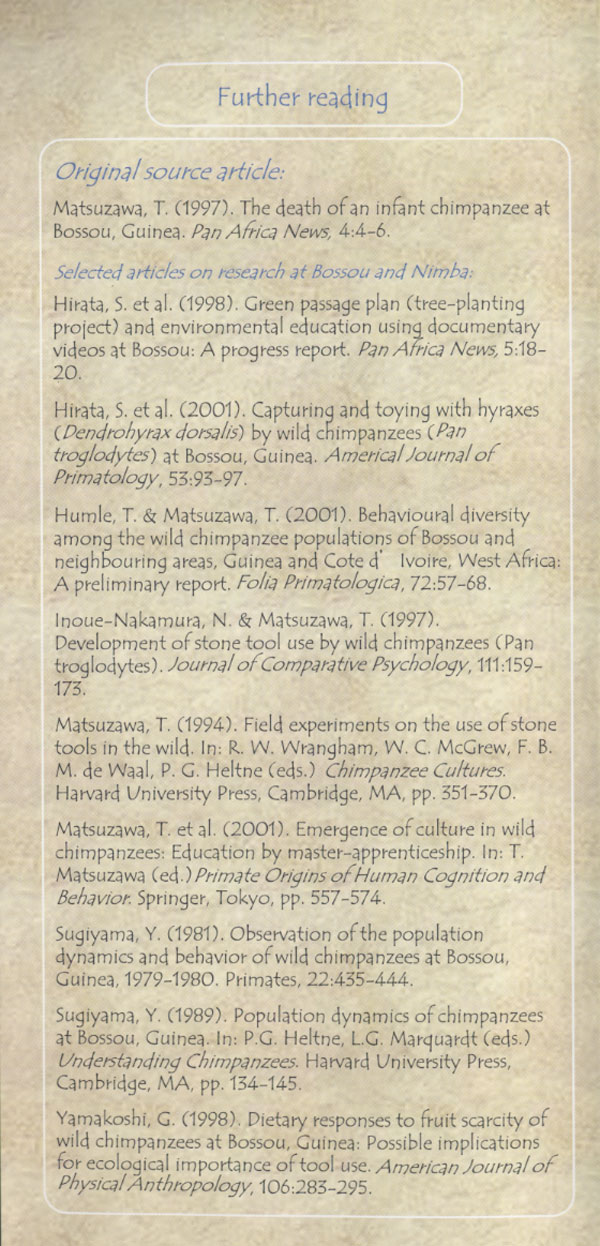
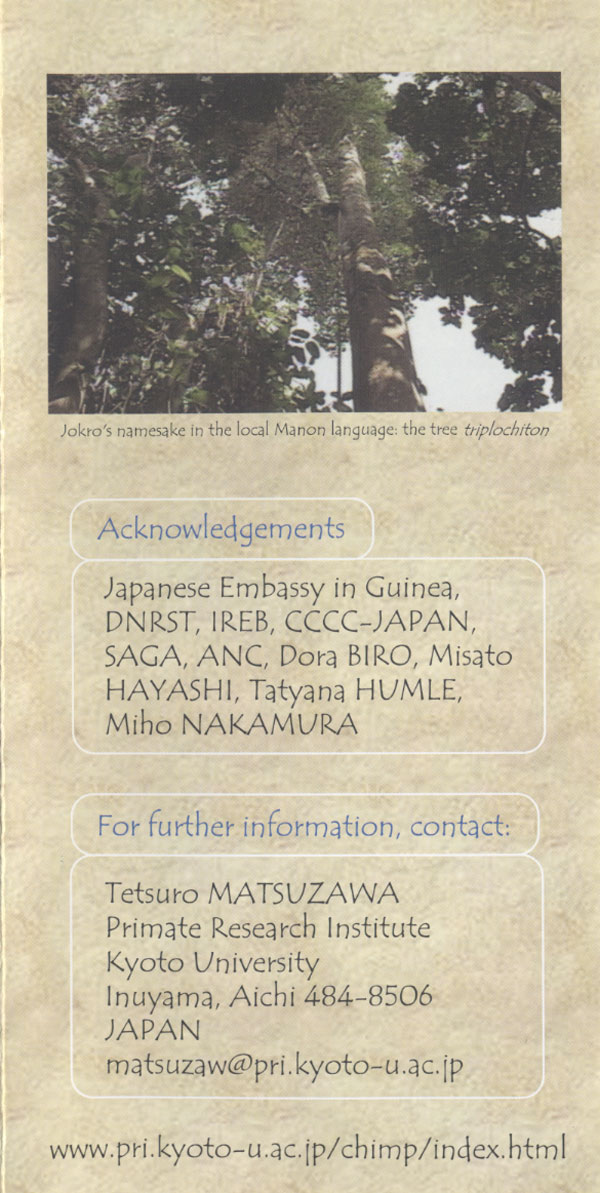
|




